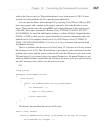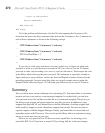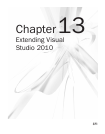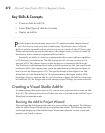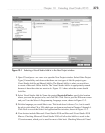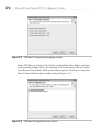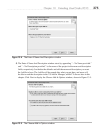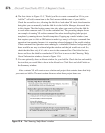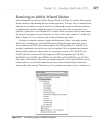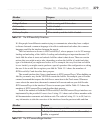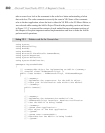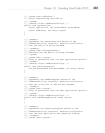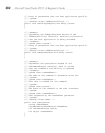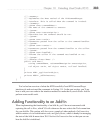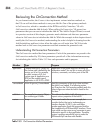
Chapter 13: Extending Visual Studio 2010 377
Examining an Add-In Wizard Solution
After running the New Project Add-In Project Wizard, you’ll have a solution with a project
that has skeleton code forming the basis of the application. Not only will you need to know
what files are available, but you’ll also need to understand a couple of interfaces and how
to implement the interface methods properly. If you’re a little rusty on interfaces, now
might be a good time to visit Chapter 4 for a review. What you mostly need to know about
this project is that there are new references, a Connect class, and a couple of *.AddIn files.
Refer to Figure 13-7 as we discuss each of these Add-In project items.
Looking at assembly references (under the References folder), you might wonder
what all the assemblies are with EnvDTE names. Pulling the name apart, Env is short
for environment and DTE means Development Tools Extensibility. So, EnvDTE is an
assembly containing code that allows you to extend the VS development environment.
Each assembly represents functionality for a particular version of VS: EnvDTE is for
VS.NET (the first version of VS that supported .NET development) and VS 2003,
EnvDTE80 is for VS 2005, EnvDTE90 is for VS 2008, and EnvDTE100 is for VS 2010
(the subject of this book). The reason you need references to all of the EnvDTE versions
is that each new version builds upon the previous with new functionality, rather than
replacing the older version. Therefore, you’ll sometimes encounter classes, interfaces, or
Figure 13-7 An Add-In project in Solution Explorer



